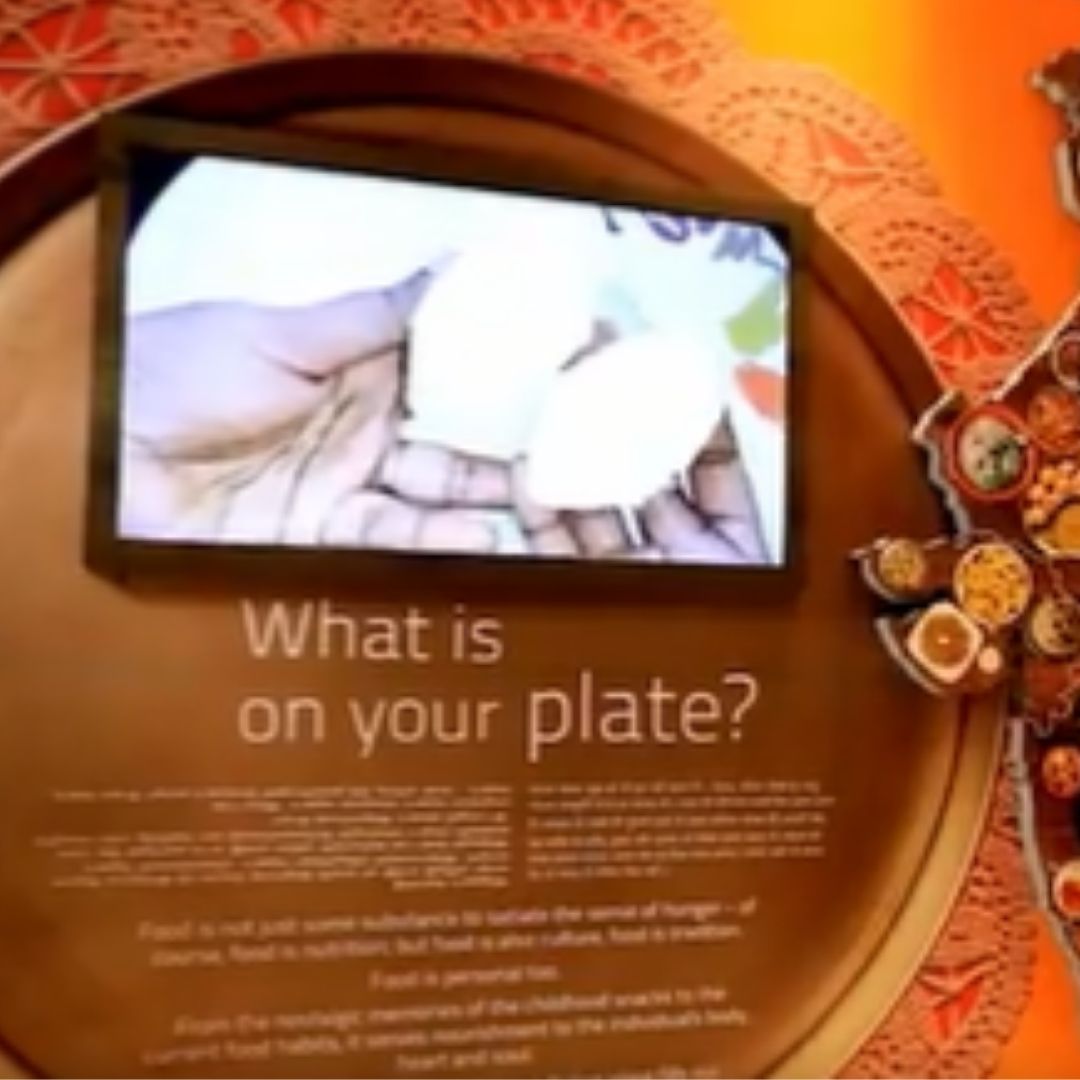
Image Credits: Twitter/Piyush Goyal
All You Need To Know About India's First 'Food Museum' In Tamil Nadu's Thanjavur
Writer: Tashafi Nazir
For most people, journalism sounds hectic and chaotic. For her, it's a passion she has been chasing for years. With an extensive media background, Tashafi believes in putting efforts on presenting a simple incident in the most interesting way.
Tamil Nadu, 23 Nov 2021 12:03 PM GMT
Editor : Palak Agrawal |
Palak a journalism graduate believes in simplifying the complicated and writing about the extraordinary lives of ordinary people. She calls herself a " hodophile" or in layman words- a person who loves to travel.
Creatives : Tashafi Nazir
For most people, journalism sounds hectic and chaotic. For her, it's a passion she has been chasing for years. With an extensive media background, Tashafi believes in putting efforts on presenting a simple incident in the most interesting way.
It has been set up to digitally exhibit the food grain production scenario in the country and across the globe to highlight the challenges with regards to food storage.
As a novel initiative and a step towards Aatmanirbhar Bharat, the Food Corporation of India (FCI) launched India's First Food Museum in Tamil Nadu last week, on November 15. The Museum has been set up Tamil Nadu's Thanjavur, which is also the state's cultural capital. It has been set up to digitally exhibit the food grain production scenario in the country and across the globe to highlight the challenges with regards to Food Storage.
FCI has established the museum in association with Visvesvaraya Industrial and Technological Museum (VITM), Bengaluru. It has been set up at the cost of nearly ₹1.1 crores. Union Minister of Consumer Affairs, Food and Public Distribution System Piyush Goyal, inaugurated the museum through video conference and was joined by FCI Chairman and Managing Director Atish Chandra for the virtual ceremony, Jagran reported.
Goyal said that measures were on to make the country go up the ladder from currently being the fifth-largest agricultural exporter globally.
The Food Security Museum showcases the country's agri revolution from dependency to self-sufficiency. "There was one time when the countrymen used to import wheat,but now India one of the largest exporters of agricultural products," the Minister had said during the inauguration ceremony.
The world today looks upon the country as a trusted partner, he had said and added, "We will continue to work towards Aatmanirbhar Bharat. In this mission, the central government is working towards realising the image of strong and self-reliant farmers."
Why Food Museum is set up in Thanjavur?
The location for the country's 1st Food Museum was finalised as Thanjavur, keeping in view the historical significance of the place. In a way, it is the birthplace of FCI as its first office was inaugurated here on January 14, 1965. The Museum has been developed on the premises of FCI Divisional Office at Nirmala Nagar. After 56 years, the Museum has currently been set up to commemorate the role FCI has played to ensure food security in the country.
What The Museum Is All About?
FCI's Food Museum set up at Thanjavur showcases various themes and the evolution of agricultural food practices in the country. Some of the essential themes and points about FCI's Food Museum include:
History of Foragers: The Museum showcases the evolution of agricultural systems for the human race, right from the time of nomadic hunter-gatherers to settled agrarian producers and farmers, which led to the beginning of civilisations.
Food Storage: The place also showcases various types of food storage methods developed and used over the year, both in India and globally. It also exhibits the foodgrain production scenario across the country and world and the roadblocks in storage as part of the showcase at the Museum.
Last-mile Distribution: Another critical aspect showcased at the Food Museum includes the journey of the foodgrain from the farm to the consumers' plate and the role played by FCI in it.
Operations of FCI: Through Digital presentation, the Food Museum also showcases a host of technological features employed by FCI to streamline agricultural production and distribution network. It exhibits various technologies such as Radio Frequency Identification (RFID), projection mapping, proximity, touch screen kiosk, and touch sensors and virtual reality system.
The Museum attempts to break this down accurately by showcasing the history of farming and food grains through various exhibits that marry technology with 3D models, storytelling and actual samples of seeds and grains from across the country.
There is a separate section offering details on the origins and domestication of various crops bringing home the fact that what we consume is part of a worldwide system. A projection map also helps trace the history of farming and how people store grains across the globe while another section is dedicated to the pests that could destroy crops both in the field and in storage.
A VR exhibit, as well as panels, trace the history of FCI and the journey from famines to food security with the help of traditional and modern food storage systems. A large diorama follows the whole journey of paddy from seed to plate. Lastly, an interactive quiz is there for those visitors who wish to test their newfound knowledge.
The Museum offers perspective on where our staples come from and what we eat as a country and is an exciting addition to the country's list of museums great and small.
Also Read: Delhi Records Over 7,000 Dengue Infections This Year, 5,600 Cases In November Alone
 All section
All section














